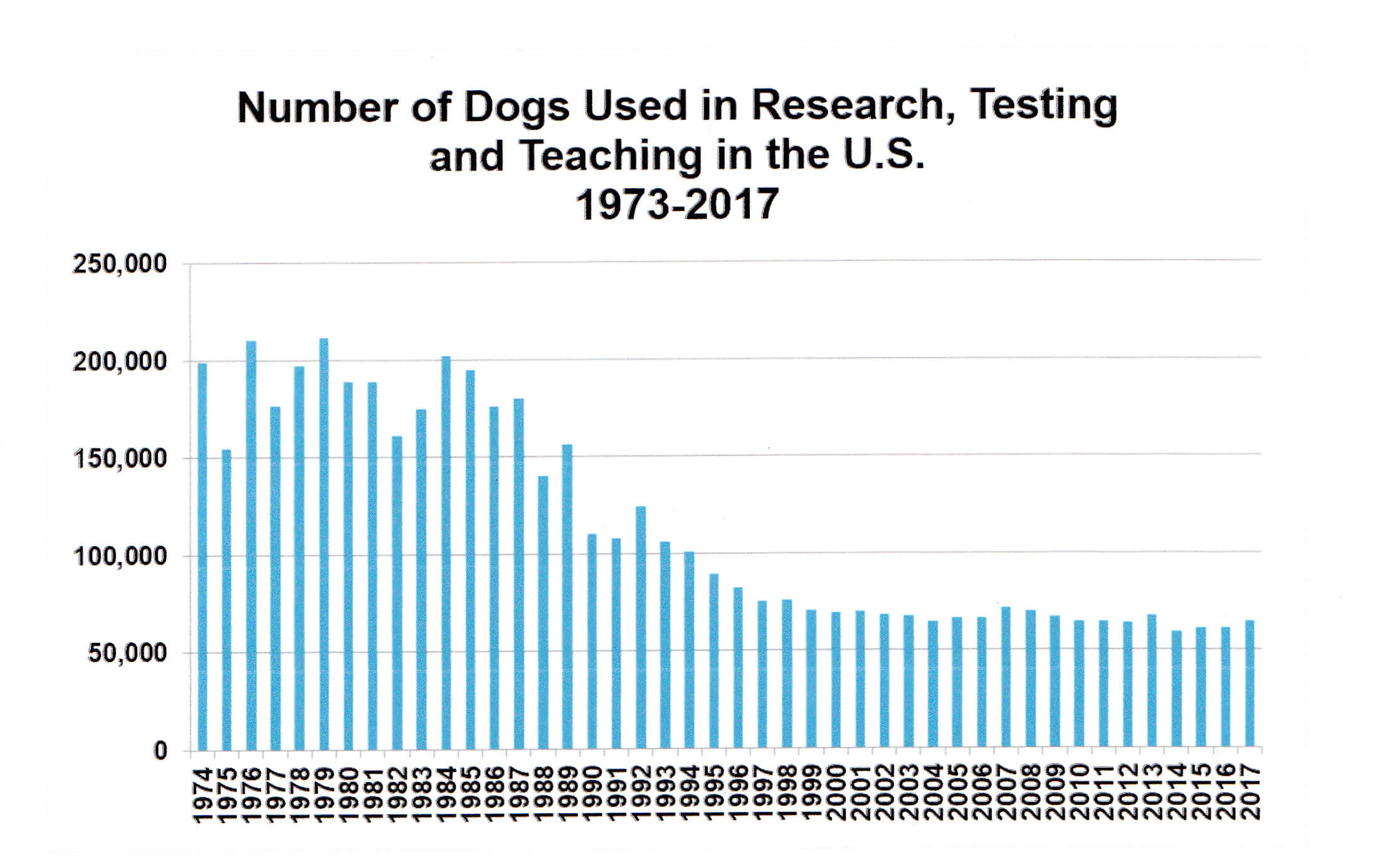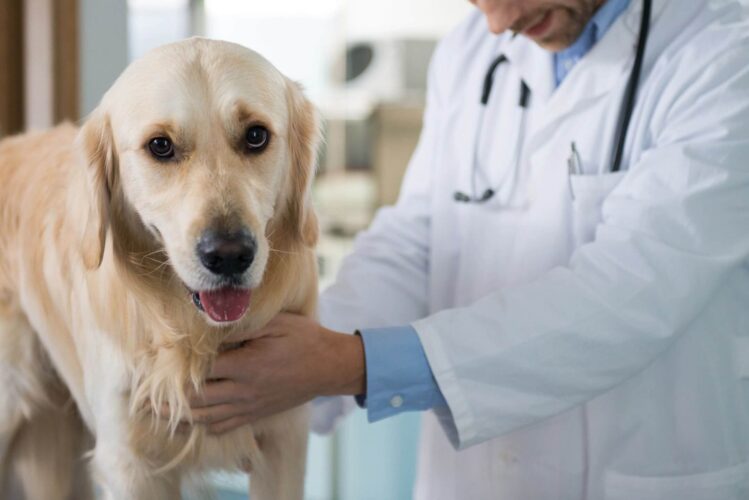
DOGS ARE NOT DISPOSABLE TO GIVE UP THEIR LIVES FOR RESEARCH
How can anyone live with themselves sacrificing dogs for human research when AI is growing by leaps and bounds. The United States Department of Agriculture (USDA) reports show that tens of thousands of dogs are used in research, testing, teaching, or experimentation in the U.S. every year by research facilities, which includes hospitals, schools, diagnostic laboratories and private firms in the pharmaceutical and biotechnology industries.
While the number of dogs used in research has declined by 69% since their peak use in 1979, the most up to date USDA statistics show that 64,707 dogs were used in “research, testing, teaching, or experimentation” in 2017, although the exact purposes for which these dogs were used is still unclear.

Studies show that the majority of dogs used in research, upwards of 75%, are estimated to be used in pharmaceutical testing, even though many scientists have concluded that they are poor predictors of drug effects in the human body. They are still used because regulatory authorities require that drugs be tested in both a rodent and non-rodent species for toxicity, and the latter is often dogs, because they are usually readily available, as well as their trusting and social nature, which makes them easy to handle. Dogs are also used in many other areas of biomedical research, including heart research, surgery, dental health and studies of hereditary diseases, in addition to research on the health, nutrition and behavior of dogs themselves.
The dog used most in research, the beagle is because of their intermediate size and loving nature. Kevin J. Stafford, author of The Welfare of Dogs, speculated that “Their existence for some time as ‘the’ laboratory dog may make it easier for handlers and research scientists to use them without becoming too emotionally attached to them.” When experiments call for larger animals, hounds (mongrels) are commonly used. Although the U.S. does not collect information on the breeds of dogs used in research, data obtained from the Freedom of Information Act requests filed by NAVS revealed that many other breeds, including, but not limited to, Golden Retrievers, Labrador Retrievers, Greyhounds, Pit Bulls and Schnauzers, are among the dogs used in research as well.
It seems that most dogs used in research get purchased from Class A dealers, licensed commercial breeders that sell “purpose-bred” dogs solely for research. They breed beagles, hounds and mongrel dogs and raise the animals at their own facilities to fulfill orders for canines ranging from 33-60 pounds and are 6 to 12 months old. Most dogs sold for research are less than a year old. From a research perspective, dogs from Class A dealers have good health and good veterinary care (known vaccination history, preventative treatment for parasites, known pedigree and improved socialization), the cost is high for these dogs, currently over $700 per dog.
These vendors offer devocalization services (a surgical procedure which makes it physically impossible for the dog to bark), this is so sickening and done only so barking dogs do not disturb lab technicians. There are current state legislative initiatives to ban devocalization, as the surgery can cause serious health issues, including infections, and increased possibility of food and water becoming trapped in the dogs’ lungs. As a result, it is currently illegal in five states.
There are some research institutions that purchase dogs from Class B dealers, licensed dealers that sell “random source” dogs. These are dogs that are obtained from an animal shelter or dog pound (this is known as “pound seizure”), at auction, or from any person who did not breed and raise the dogs on their premises. Class B dogs are less expensive than “purpose-bred” dogs used in research, but research with these dogs may be compromised because of their unverifiable health status, poorly-defined temperament and unknown age.
Over the past several years, more research institutions have moved away from using Class B dogs, and as a result, the number of Class B dealers has declined. Back in December 2013, the National Institutes of Health (NIH) announced that they would implement a new policy prohibiting the procurement of dogs from Class B dealers using NIH grant funds starting in 2015. This prohibition went into effect on October 1, 2014. Dogs used in research supported by the NIH now need to be acquired from USDA Class A dealers or other approved legal sources such as privately owned colonies or client owned animals. It should be noted however, that dogs with Class B-like characteristics, namely large, mature, socialized out-bred hounds or mongrels, are being bred by Class A dealers for use in scientific experimentation. http://www.navs.org
In the laboratory, dogs older than four months of age are identified with a tag or may have an ID number tattooed in their ear. They are housed in spaces depending on their weight, according to recommendations made by The Guide for the Care and Use of Laboratory Animals. It is recommended that dogs less than 33 pounds have a minimum floor area of eight square feet per animal; dogs up to 66 pounds have a minimum floor area of 24 square feet per animal. The Guide also recommends that cage height be sufficient for the animals to be comfortable standing with their feet on the floor.
The laboratory settings for dogs is not pleasant, as they have shown signs of stress, fear and anxiety. There are a number of common laboratory procedures that can cause these responses, including cage changing, the removal of a dog from a stable group, changing of established maintenance routines, or restraint or confinement in a strange setting. While some dogs are able to adapt positively to stressors, other dogs don’t adjust and can develop disorder and dysfunctions that can adversely affect their quality of life, in addition to significantly impacting the research in which the animal is involved.
Laboratory dogs that are showing signs of short term stress may shake, crouch, display signs of restlessness or oral behaviors (tongue out, licking muzzle, swallowing). Dogs that display signs of long term or chronic stress may be vocal, exhibit repetitive behaviors, have low posture, increase autogrooming and eat feces. It has been noted that dogs often stop such behaviors when their handlers enter the room, resulting in a serious underestimation of the true mental and physical condition of dogs used in research laboratory settings.
The more we continue to learn of all the positive effects dogs have on humans it is increasingly becoming more important to stop these practices. When you consider that the differences between dogs and humans make them a poor model for humans, there is not reason to continue subjecting these wonderful companions to this unnecessary pain and experimentation.

